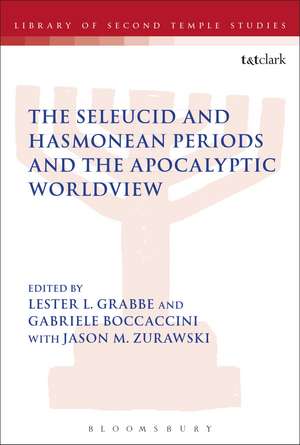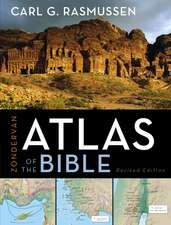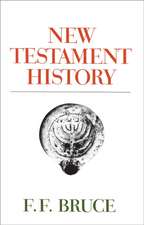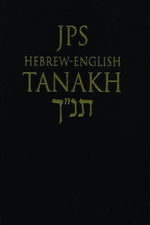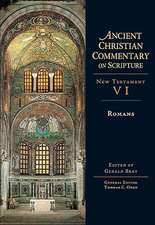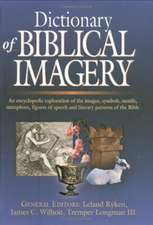The Seleucid and Hasmonean Periods and the Apocalyptic Worldview: The Library of Second Temple Studies
Editat de Dr. Lester L. Grabbe, Gabriele Boccaccini, Jason M. Zurawskien Limba Engleză Paperback – 31 oct 2018
| Toate formatele și edițiile | Preț | Express |
|---|---|---|
| Paperback (1) | 238.11 lei 6-8 săpt. | |
| Bloomsbury Publishing – 31 oct 2018 | 238.11 lei 6-8 săpt. | |
| Hardback (1) | 832.91 lei 6-8 săpt. | |
| Bloomsbury Publishing – 24 feb 2016 | 832.91 lei 6-8 săpt. |
Din seria The Library of Second Temple Studies
- 22%
 Preț: 832.58 lei
Preț: 832.58 lei - 22%
 Preț: 833.81 lei
Preț: 833.81 lei - 22%
 Preț: 889.81 lei
Preț: 889.81 lei - 22%
 Preț: 889.49 lei
Preț: 889.49 lei - 22%
 Preț: 948.75 lei
Preț: 948.75 lei - 31%
 Preț: 770.05 lei
Preț: 770.05 lei - 22%
 Preț: 257.97 lei
Preț: 257.97 lei - 31%
 Preț: 772.81 lei
Preț: 772.81 lei - 14%
 Preț: 1010.88 lei
Preț: 1010.88 lei - 22%
 Preț: 949.56 lei
Preț: 949.56 lei - 22%
 Preț: 1005.41 lei
Preț: 1005.41 lei - 30%
 Preț: 952.83 lei
Preț: 952.83 lei - 22%
 Preț: 1155.22 lei
Preț: 1155.22 lei - 13%
 Preț: 257.03 lei
Preț: 257.03 lei - 22%
 Preț: 1066.22 lei
Preț: 1066.22 lei - 30%
 Preț: 774.20 lei
Preț: 774.20 lei - 22%
 Preț: 1066.46 lei
Preț: 1066.46 lei - 22%
 Preț: 1480.62 lei
Preț: 1480.62 lei - 31%
 Preț: 891.03 lei
Preț: 891.03 lei - 22%
 Preț: 1069.31 lei
Preț: 1069.31 lei - 22%
 Preț: 1642.67 lei
Preț: 1642.67 lei - 22%
 Preț: 1066.54 lei
Preț: 1066.54 lei - 22%
 Preț: 717.12 lei
Preț: 717.12 lei - 22%
 Preț: 948.10 lei
Preț: 948.10 lei - 31%
 Preț: 947.44 lei
Preț: 947.44 lei - 22%
 Preț: 1007.04 lei
Preț: 1007.04 lei - 31%
 Preț: 1064.02 lei
Preț: 1064.02 lei - 31%
 Preț: 772.98 lei
Preț: 772.98 lei - 22%
 Preț: 1125.99 lei
Preț: 1125.99 lei - 31%
 Preț: 946.72 lei
Preț: 946.72 lei - 13%
 Preț: 258.59 lei
Preț: 258.59 lei - 22%
 Preț: 944.83 lei
Preț: 944.83 lei - 22%
 Preț: 259.90 lei
Preț: 259.90 lei - 14%
 Preț: 1154.23 lei
Preț: 1154.23 lei - 31%
 Preț: 770.94 lei
Preț: 770.94 lei - 22%
 Preț: 1066.61 lei
Preț: 1066.61 lei - 30%
 Preț: 774.20 lei
Preț: 774.20 lei - 14%
 Preț: 769.56 lei
Preț: 769.56 lei - 22%
 Preț: 772.24 lei
Preț: 772.24 lei - 22%
 Preț: 1065.91 lei
Preț: 1065.91 lei - 22%
 Preț: 948.34 lei
Preț: 948.34 lei - 22%
 Preț: 1490.73 lei
Preț: 1490.73 lei - 30%
 Preț: 1010.47 lei
Preț: 1010.47 lei - 22%
 Preț: 652.23 lei
Preț: 652.23 lei
Preț: 238.11 lei
Preț vechi: 305.93 lei
-22% Nou
Puncte Express: 357
Preț estimativ în valută:
45.57€ • 49.48$ • 38.28£
45.57€ • 49.48$ • 38.28£
Carte tipărită la comandă
Livrare economică 22 aprilie-06 mai
Preluare comenzi: 021 569.72.76
Specificații
ISBN-13: 9780567685025
ISBN-10: 0567685020
Pagini: 336
Dimensiuni: 156 x 234 mm
Greutate: 0.38 kg
Editura: Bloomsbury Publishing
Colecția T&T Clark
Seria The Library of Second Temple Studies
Locul publicării:London, United Kingdom
ISBN-10: 0567685020
Pagini: 336
Dimensiuni: 156 x 234 mm
Greutate: 0.38 kg
Editura: Bloomsbury Publishing
Colecția T&T Clark
Seria The Library of Second Temple Studies
Locul publicării:London, United Kingdom
Notă biografică
Lester L. Grabbe is Professor Emeritus of Hebrew Bible and Early Judaism at the University of Hull, UK, as well as being series editor of the Library of Second Temple Studies.Gabriele Boccaccini is Professor of Second Temple Judaism and Early Rabbinic Literature at the University of Michigan, USA.Jason M. Zurawski is a PhD candidate in Second Temple Judaism at the University of Michigan, USA.
Cuprins
Part I. INTRODUCTORY ESSAYS1 INTRODUCTION- Lester L. Grabbe, Professor Em., University of Hull, UK2 THE SELEUCID AND HASMONEAN PERIODS AND THE APOCALYPTIC WORLDVIEW--AN OVERVIEW- Lester L. Grabbe, Professor Em., University of Hull, UK3 NON-APOCALYPTIC RESPONSES TO APOCALYPTIC EVENTS: NOTES ON THE SOCIOLOGY OF APOCALYPTICISM Gabriele Boccaccini, University of Michigan, USAPart II. MAJOR PAPERS AND RESPONSES4 UNDERSTANDING THE RELATIONSHIP BETWEEN THE APOCALPTIC WORLDVIEW AND JEWISH SECTARIAN VIOLENCE: THE CASE OF THE WAR BETWEEN ALEXANDER JANNAEUS AND DEMETRIUS III- Kenneth Atkinson, University of Northern Iowa, USARESPONSE TO ATKINSON, Albert I. Baumgarten, Bar-Ilan University, IsraelRESPONSE TO ATKINSON, Sandra Gambetti, City University of New York (CUNY), USA5 WAS THE MACCABEAN REVOLT AN APOCALYPTIC MOVEMENT?- Gerbern S. Oegema, Mcgill University, CanadaRESPONSE TO OEGEMA- Lorenzo DiTommaso, Concordia University, CanadaRESPONSE TO OEGEMA- John Kampen, Methodist Theological School, USA6 APOCALYPTIC WORLDVIEWS--WHAT THEY ARE AND HOW THEY SPREAD: INSIGHTS FROM THE SOCIAL SCIENCES- Anathea E. Portier-Young, Duke Divinity School, USARESPONSE TO PORTIER-YOUNG-Edward Dabrowa, Jagiellonian University, Poland RESPONSE TO PORTIER-YOUNG-Torleif Elgvin, NLA University College, Norway7 OVERALL RESPONSE TO THE MAIN PAPERS- Erich Gruen, University of California, USA Part III. SHORT PAPERSPart IV. CONCLUSIONSPERSPECTIVES ON APOCALYPTIC IN THE HASMONAEAN PERIOD Lester L. Grabbe, Professor Em., University of Hull, UK.
Recenzii
There is a high level of interaction between the papers, resulting in nuanced discussion of several key issues . A clear guide to the state of several interlocking discussions, and provides useful focus concerning some rather underdetermined issues.
A true gem by virtue of the fact that it does not only present cogent and thought-provoking contributions but also responses to these essays. Thereby, one gets an impression of the very vivacious and productive atmosphere in which these discussions evolved. At the same time, the combination of chapters and responses provides an important glimpse into a scholarly field in which criticism of ideas is a prerequisite for continuous progress.
A true gem by virtue of the fact that it does not only present cogent and thought-provoking contributions but also responses to these essays. Thereby, one gets an impression of the very vivacious and productive atmosphere in which these discussions evolved. At the same time, the combination of chapters and responses provides an important glimpse into a scholarly field in which criticism of ideas is a prerequisite for continuous progress.
